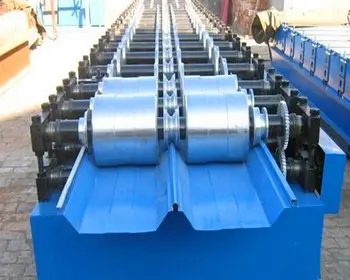
The Innovations in Stud and Track Frame Forming Machines
In the modern construction industry, efficiency and precision are paramount. One of the most significant innovations facilitating these requirements is the stud and track frame forming machine. This equipment is essential for manufacturers of metal studs and tracks, which are widely used in drywall construction, creating non-load-bearing walls, and in various framing applications.
Stud and track frame forming machines are engineered to produce metal profiles with incredible consistency and speed. The core function of these machines is to convert flat sheets of metal into shapes that can be used in construction. The process begins with feeding the flat metal sheets into the machine, which then subjects them to a series of rolls and punches to form the desired profile. This not only increases production efficiency but also ensures that every piece manufactured meets the specified standards required for building projects.
One of the key benefits of using a stud and track frame forming machine is the reduction in labor costs and time. Traditional methods of creating metal framing components often involve manual labor and multiple steps, which can be time-consuming and prone to error. In contrast, these machines streamline the manufacturing process, reducing the time required to produce frames while also minimizing human error. Multiple profiles can be fabricated in a single production run, making the machine a versatile solution for manufacturers.
Moreover, advancements in technology have led to the development of automated and computer-controlled forming machines. With the aid of sophisticated software, operators can input design specifications directly into the machine. This automation not only enhances precision but also enables manufacturers to respond quickly to changing project demands. Features such as variable speed control and programmable settings allow for tailored production runs, accommodating different sizes and profiles with ease.

Durability and reliability are critical factors in the construction industry, and stud and track frame forming machines are built to withstand rigorous operating conditions. Most machines are designed with robust materials that ensure longevity, reducing maintenance costs over time. Additionally, modern machines often incorporate safety features to protect operators during the manufacturing process, aligning with industry regulations and standards.
The applications of stud and track frames are extensive, ranging from residential homes to commercial buildings. As the construction industry continues to evolve toward greener practices, the use of these metal framing systems is becoming increasingly popular. Metal frames are not only durable but are also recyclable, making them an eco-friendly option compared to traditional wood framing. This trend aligns with the industry's broader goal of reducing waste and carbon footprints.
Efficiency, precision, and sustainability are driving the growth of stud and track frame forming machines. Manufacturers are increasingly recognizing the importance of investing in these technologies to remain competitive in the marketplace. As construction projects demand faster turnarounds and higher quality standards, the role of these machines in the production process becomes even more critical.
In conclusion, stud and track frame forming machines represent a significant advancement in the construction industry. Through automation, precision manufacturing, and sustainable practices, these machines offer numerous benefits that align with contemporary building needs. As technology continues to evolve, we can expect even more sophisticated innovations in framing equipment, which will further enhance efficiencies and support the ongoing transformation in construction methodologies. Embracing these advancements is essential for manufacturers looking to thrive in a rapidly changing landscape.